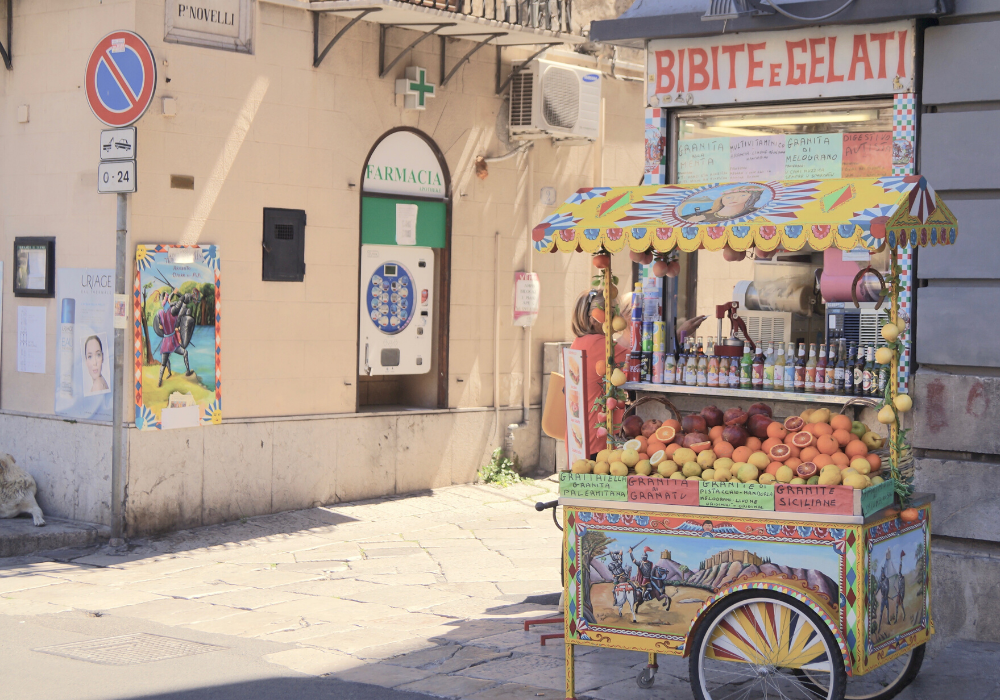Best Things to do in Palermo
Sicily’s Capital
“To have seen Italy without having seen Sicily is to not have seen Italy at all, for Sicily is the clue to everything.”
-Johann Wolfgang von Goethe
The region of Sicily for which Palermo is the capital consists of the main island forming the so called ‘soccer ball’ off the toe of the Italian boot, as well as smaller surrounding islands. The Mediterranean Sea offers waters for swimming, fishing and sailing. The island is separated from the mainland and neighbouring region of Calabria by the Messina Strait. Sicily has an immensely rich culture due to a number of invasions over the centuries influencing the local language, traditions, architecture and cuisine.
Exploring Palermo
Palermo was crowned culture capital of Italy in 2018. Cathedrals, theatres, catacombs, traditional food and marketplaces are just the beginning. Interestingly, it was only considered part of Italy from 1861 and before then, the island faced continuous invasions given its vulnerable position in the middle of the Mediterranean. Invaded over the centuries by Normans, Phoenicians, Greeks dating back to the 5th and 6th centuries BC, followed by Romans, Byzantines and Arabs, its culture, cuisine and populations are a melting pot of rich history. Although much of Palermo’s infrastructure looks like it could crumble before your eyes, this only adds to the charming atmosphere of this historic, urban and sometimes grungy city. Tourism is growing in Palermo and there’s never been a better time to visit the ancient city.
Wander
Via Maqueda is the ideal starting point for exploring the city on foot or even by bike. The street runs from one side of Palermo to the other and is pedestrian-only which makes it particularly nice to wander without the noise of traffic. Small laneways branch off of this main road where you can find ancient crumbling buildings and store fronts.
Markets
Markets are always the best places to observe daily life in any city. It gives insight into the rituals of the locals, what produce is grown in the area and how much things cost. A sensory overload with the sounds of foreign languages and dialects being shouted from the stalls and customers bargaining down their goods, the smell of street food cooking on the barbeque and all the colours of local culture on display.
Palermo has many markets in various areas of the city and Mercato Ballarò on Vicolo Del Carmelo is as lively as they come. This market in the old town lours all walks of life. Unlike other markets of Italy which feel very wholesome and family oriented, Ballarò is a lot more urban and you will have to keep a close eye on your belongings. Don’t let this deter you though. Fresh produce, seafood and just about everything but the kitchen sink is on sale here.
The best time to go is around lunch time so you can sit and enjoy some of the city’s best street food and traditional Palermitano dishes. Small eateries within the market offer local specialties for as little as 3 Euro per dish. Pull up a chair at a plastic table outside Umby & Tony for one of the tastiest polpette di sarde- sardine balls with pickled onions that you’ll ever find. Also do not miss their parmigianna of silky eggplant layered with sweet tomato sauce and fresh parmesan cheese. The whole grilled fish is also straight from one of the neighbouring fish stalls.
Just when you think you can’t eat any more, next door at Antica Caffetteria di Maria Agata you can top it all off with one of the best cannoli in town- a golden, crunchy shell piped full of creamy ricotta.
Cultural Sites & Monuments
Palermo wasn’t named the Culture Capital of Italy for nothing. You can find an endless list of monuments, piazzas and sites to visit on any of the online guides. You can also find many walking tours offered throughout the city. Below is a small selection of the main highlights.
Capella Palatina is a famous chapel in Palermo for its entirely golden interior with solid gold, mosaics, gemstones and marble materials used in the construction. This Chapel is the only one of its kind and the intricate artworks are worth sitting back and admiring for a while. Tickets cost 10-12 Euro.
Piazza Indipendenza, 90129 Palermo, Italy
Cappucini Catacomb is an eerie sight and will leave you with a story to tell when you leave Palermo. Human skeletons hang from the walls, once conserved as the Cappucini Friars still in their hooded robes. If that isn’t enough to spook you, one of the most interesting things of this catacomb is the body of a little girl named Rosalia Lombardo who tragically died at just two years old in 1920. She was embalmed in a way that people today still struggle to comprehend as her body has remained almost completely unchanged. She is referred to as the Sleeping Beauty of Palermo. Entry is just 3 Euro.
Piazza Cappuccini, 1, 90129 Palermo, Italy
A stroll around the tranquil port area is a welcomed break from the chaos of the city centre. Yachts float in the harbour and bars line the water’s edge. One of the most important botanical gardens of Europe is located on the marina and houses plant and tree species from all over the world.
Teatro Massimo has been standing since 1897 and at the time of its opening was the third largest theatre in Europe. Still today there are concerts, operas and ballets held here in its grand interior. See the website for events and tickets.
Palazzo Butera is one of Palermo’s most prestigious art galleries housed in a palace that is just as breathtaking as the art itself. Original frescos on the walls and ceilings by Gioacchino Martorana and Gaspare Fumagalli were painted in 1760 and the palace had undergone years of extensive restoration. Discover Francesca and Massimo Valsecchi’s art collection.
Website.
Santa Maria dello Spasimo, or Lo Spasimo as its known, is a Catholic church in the Kalsa neighborhood of Palermo on Via dello Spasimo. The construction of the church began in 1509 and regardless of your faith, this is one you may wish to see. The church is now an event space for open air cinema, theatre and other cultural events because of its complete absence of a roof!
The church was never completed because there were threats from the Turkish in 1535. Certain materials that were meant for the church were designated to other areas of the city that needed reinforcing in preparation for an invasion. Even in its half finished construction, Lo Spasimo is an extraordinary example of the late Gothic style architecture of Palermo at the time and the Spanish influence throughout the city. The space’s romantic, sweeping arches and ceiling of blue sky and passing clouds make it a church unlike any other.
Piazza Bologni is a quieter piazza in the historic centre where you can enjoy an aperitivo drink in the evening while people-watching before dinner. Surrounded by historic buildings that look on the verge of crumbling, there are still signs of past century’s bombings and earthquakes.
Street Food & Dining Out
Sicily and Palermo in particular are famous for street food and a unique cuisine. The many invasions over the course of history brought with it a variety of international foods and ingredients. Influences that can still be seen today include grains such as cous cous from the Phoenicians, seafood inspired by Greeks cuisine, apricots, rice, saffron, raisins, pine nuts, nutmeg, and cinnamon from North Africa and the list goes on…












